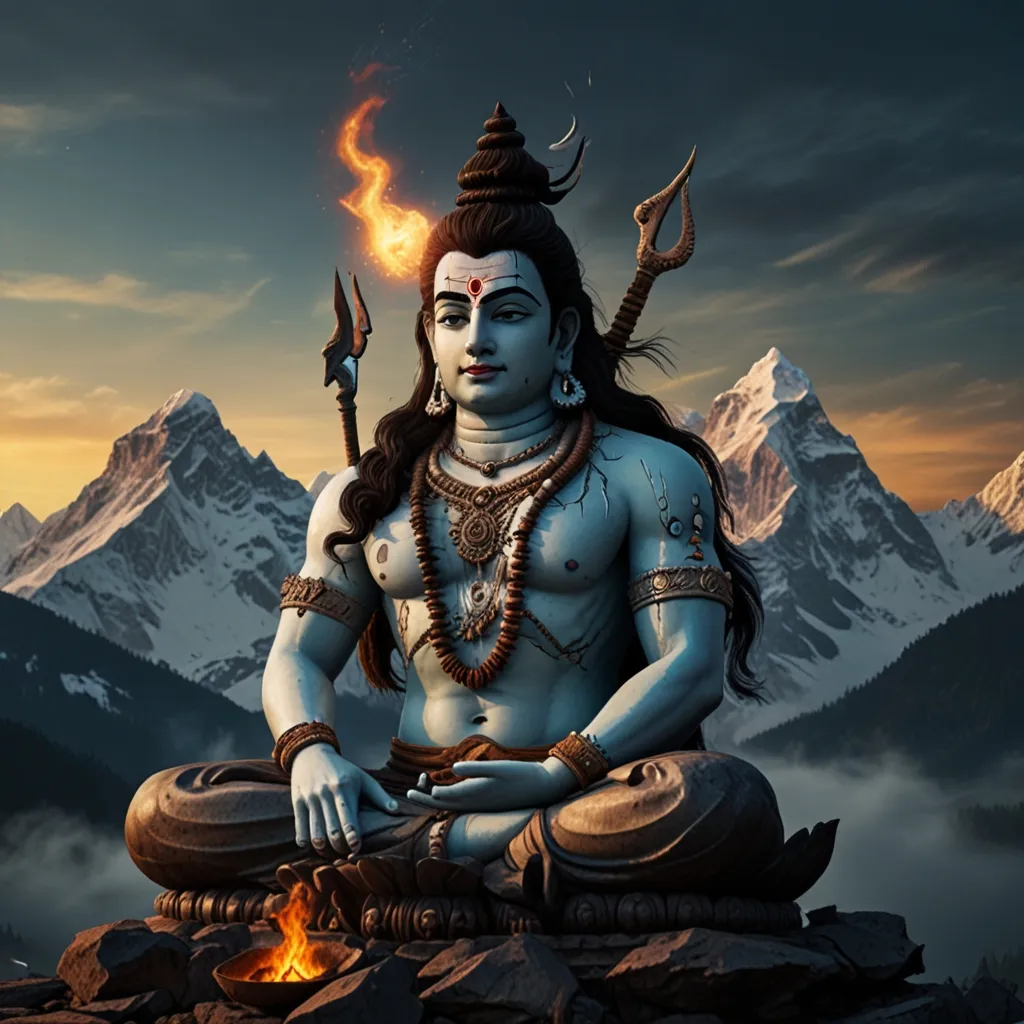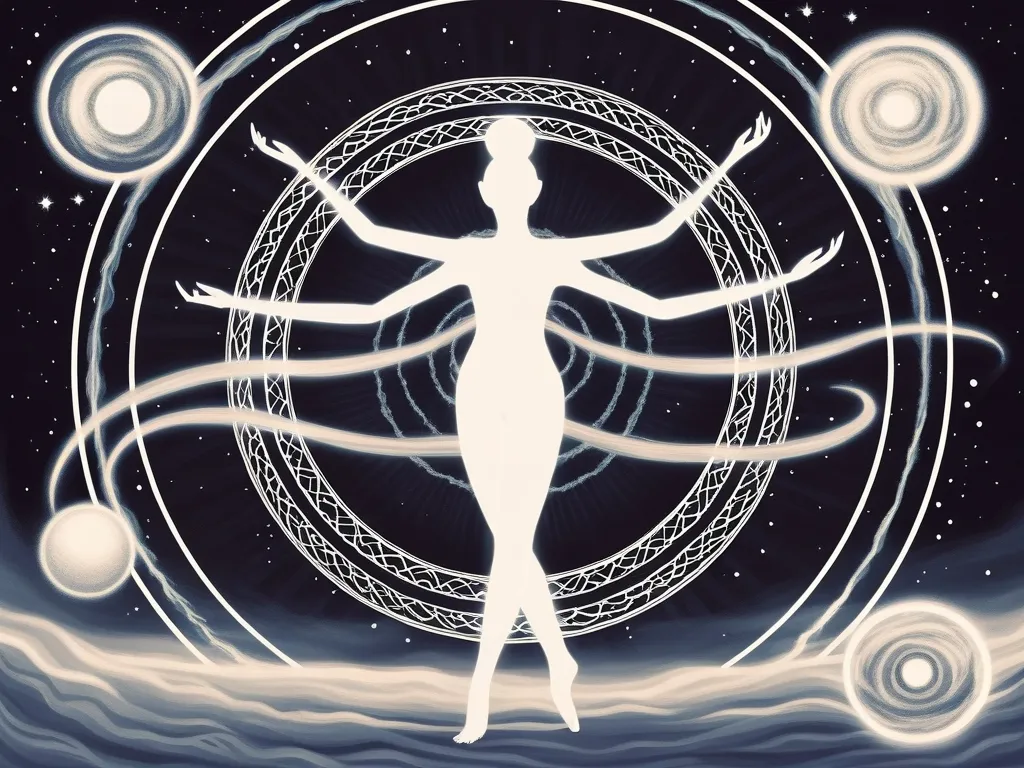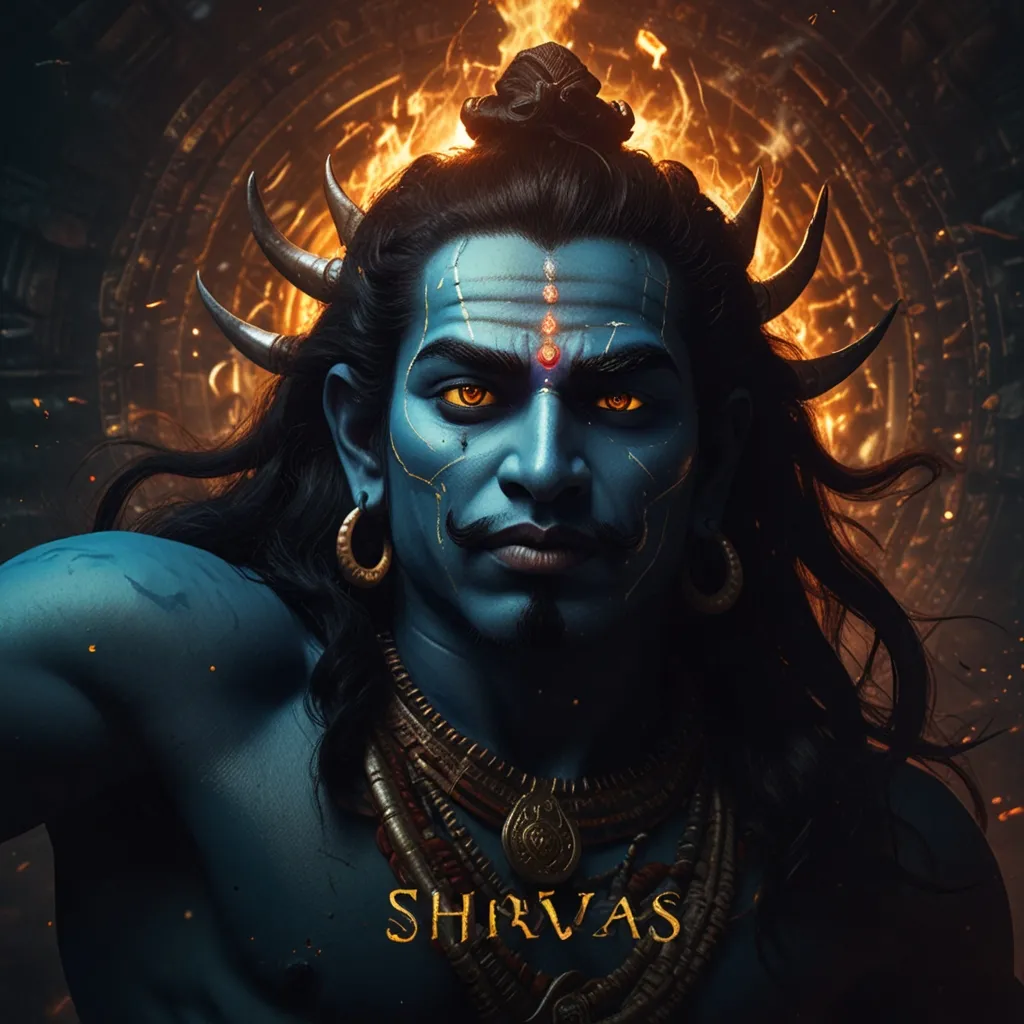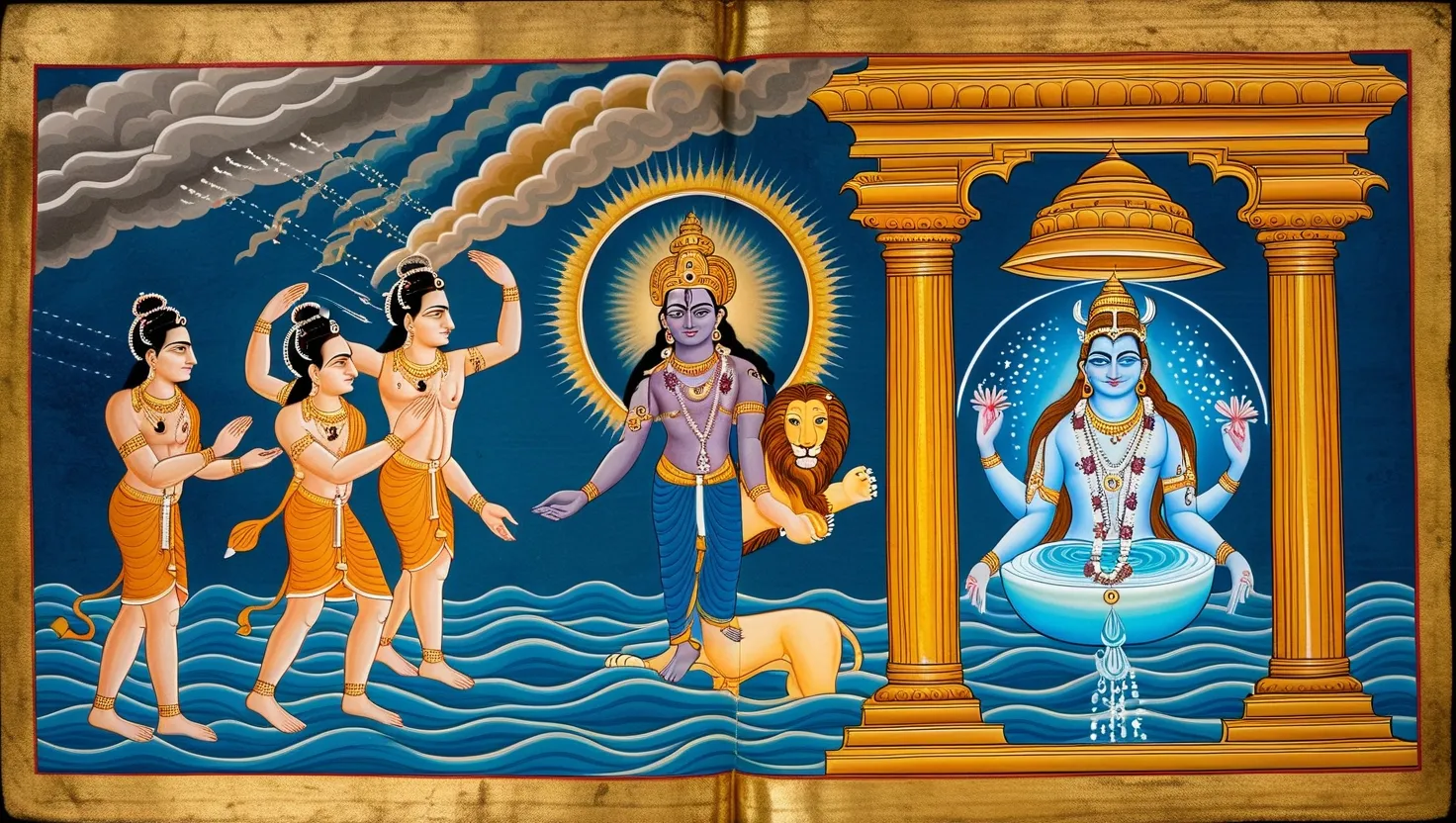Hindu mythology is teeming with stories that weave the fabric of human spirituality and moral lessons. One such gripping tale features the mighty Lord Shiva, the destroyer of the universe, and an overzealous demon named Vrikasura. This story isn’t just about divine brawls or cosmic chaos; it’s about the profound dance between good and evil, and how righteousness always finds a way to tip the scales.
Vrikasura was a demon who had one thing on his mind: absolute power. He was ready to go to any lengths, scale any heights, and plummet into any depths to achieve his ambition. One day, he decided it was time to seek the blessings of the fearsome Lord Shiva, envisaging that with the destroyer on his side, ultimate power would be within his grasp. Driven by this dream, he set off on an arduous journey to the icy and unforgiving peaks of Kedarnath in the Himalayas.
Surrounded by nothing but snow and harsh winds, Vrikasura lit a sacrificial fire, calling out to Lord Shiva with unwavering devotion. This wasn’t some casual Sunday prayer; it was hardcore and gruesome. He started hacking pieces of his own flesh, throwing them into the fire as grim offerings to grab Shiva’s attention. Yet, for all his bloody dedication, Shiva didn’t show up.
Frustration and desperation fueled Vrikasura, and he decided to go all-in by hacking his own head off. That’s when Shiva finally emerged. Impressed and perhaps a bit horrified by such extreme devotion, Shiva stopped Vrikasura and asked what he wanted. Without batting an eye, Vrikasura asked for the power to destroy anyone with just a touch.
Despite feeling uneasy about the request, Shiva granted Vrikasura his wish. However, the demon’s newfound gift only fueled his darker desires. The first thing Vrikasura wanted to do was test his shiny new power on Shiva himself and claim Gauri, Shiva’s divine consort.
Shiva, sensing impending doom, fled. His escape wasn’t simple since Vrikasura pursued him relentlessly across the universe. Even the gods in heaven, unfortunately, couldn’t provide sanctuary to Shiva, leaving him to continue his desperate flight.
In his quest for safety, Shiva found himself on the doorstep of Lord Vishnu’s domain. Now, Vishnu wasn’t just sitting around; he was in disguise as a young brahmachari—a student of spiritual sciences. The brahmachari had a radiant smile, wore deerskin, and carried prayer beads, embodying serenity and wisdom. He greeted Shiva with a promise to deal with Vrikasura once and for all.
When Vrikasura arrived, the brahmachari greeted him with soothing words and convinced him that Shiva’s boon was cursed and unreliable. He suggested Vrikasura test it on himself first. Ego and curiosity got the better of Vrikasura, and he touched his own head. Predictably, it shattered into pieces, ending his life instantly.
With the demon gone, the brahmachari, who revealed himself as Vishnu, told Shiva that anyone who messes with the righteous meets a grim fate. Vishnu’s clever intervention saved Shiva, reinforcing the idea that true power lies in wisdom and righteousness, rather than brute force or destructive desires.
This ancient tale on its surface looks like a divine drama but actually imparts profound lessons about the power of righteousness. Ambition driven by selfish desires leads nowhere good. Even an entity as powerful as Shiva faced existential peril due to Vrikasura’s relentless and misguided ambition. Yet, the story also shows that divine grace can save even in the bleakest moments, guiding us toward a path of virtue and wisdom.
Listening to such legends with a heart full of faith and devotion isn’t just about entertainment. It’s about internalizing the moral landscapes they depict. They remind us that the pursuit of power for power’s sake is a dangerous game, often ending in self-destruction. Instead, wisdom and righteousness are our true power sources, guiding us safely through life’s tumultuous journey.






